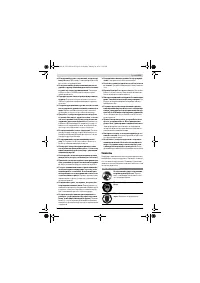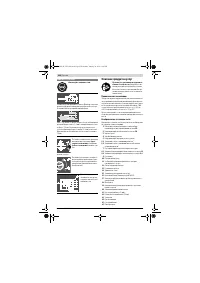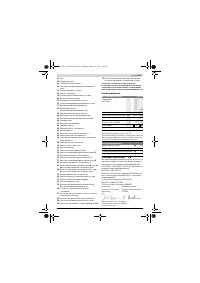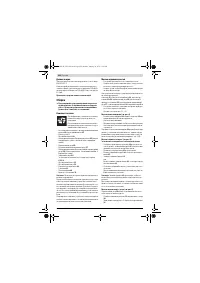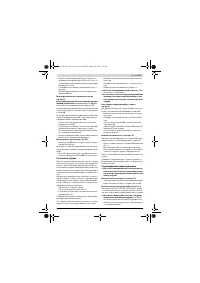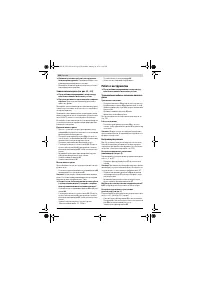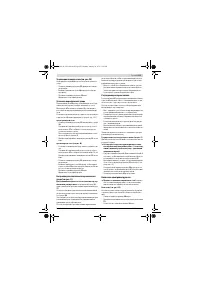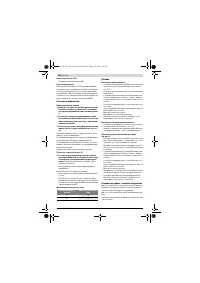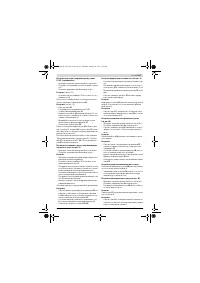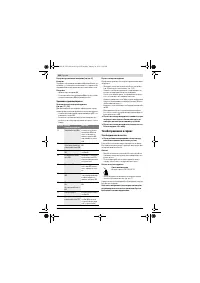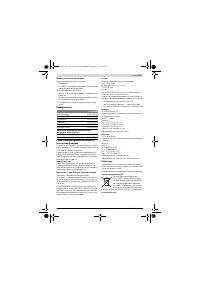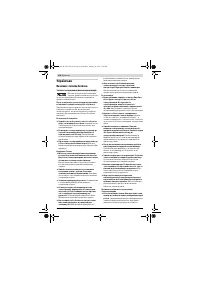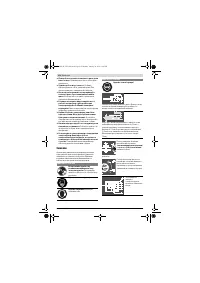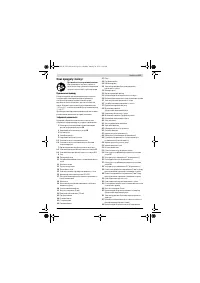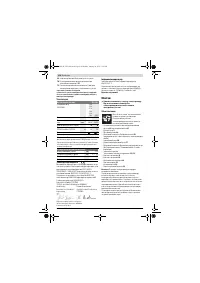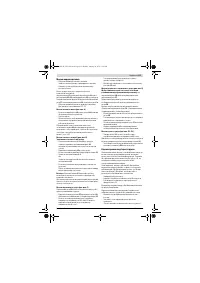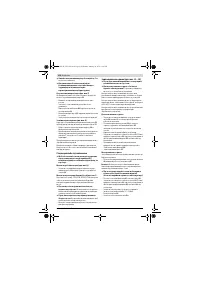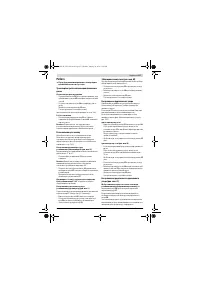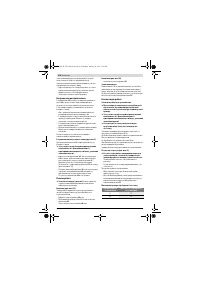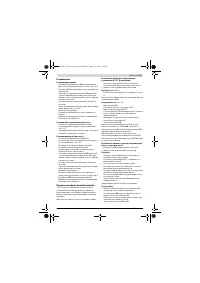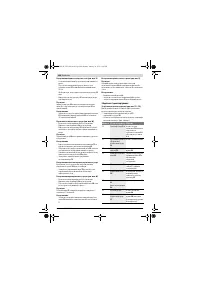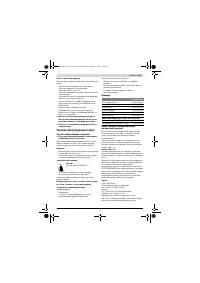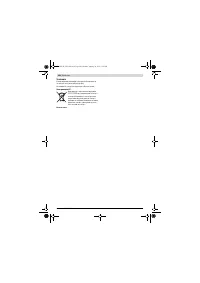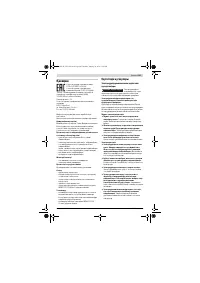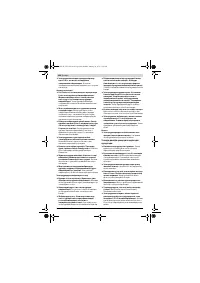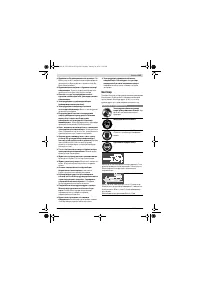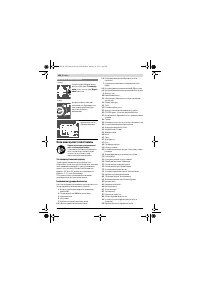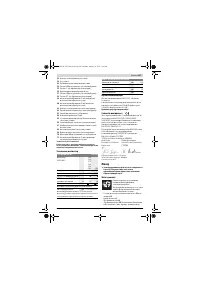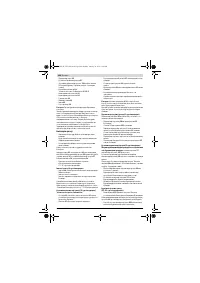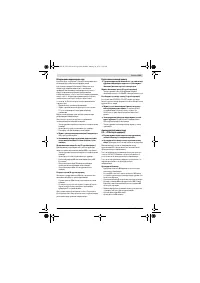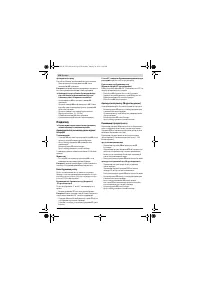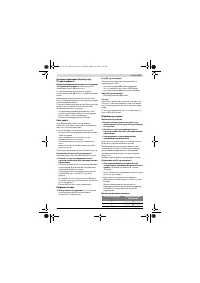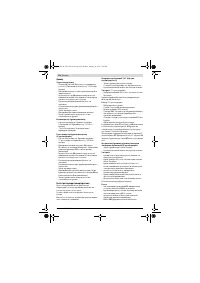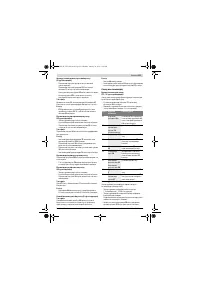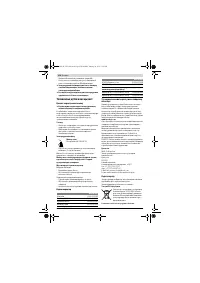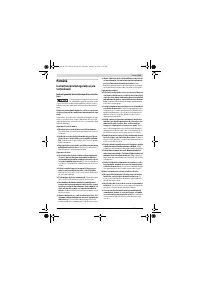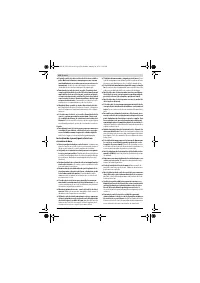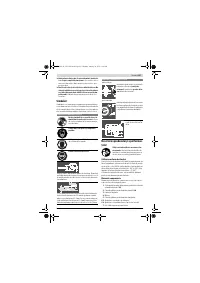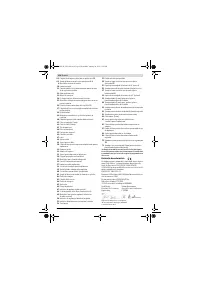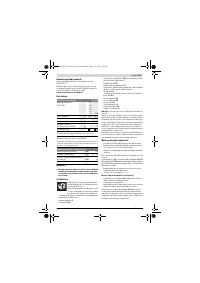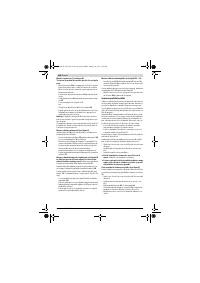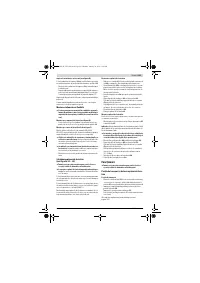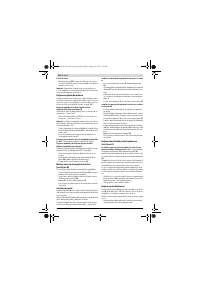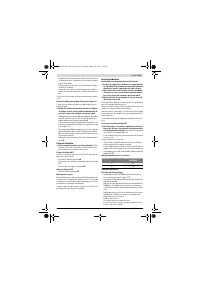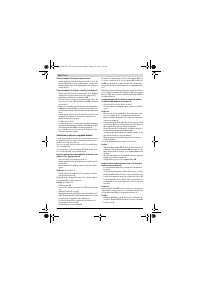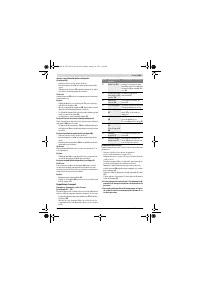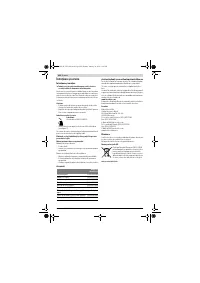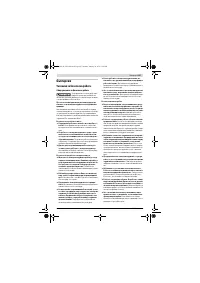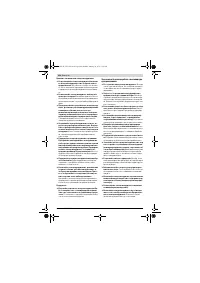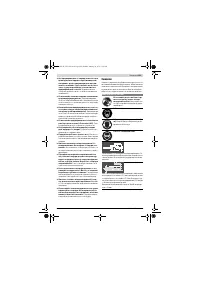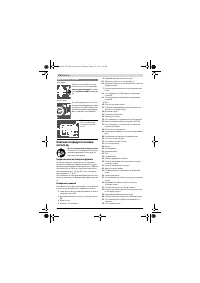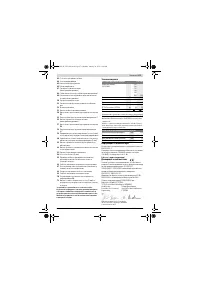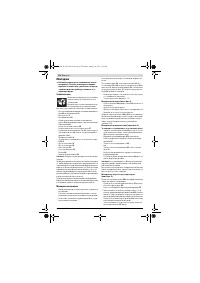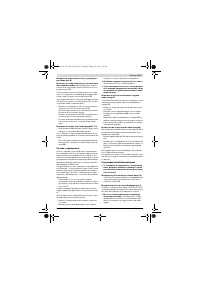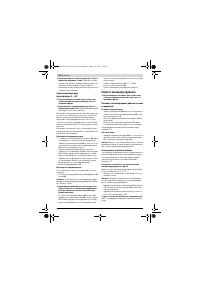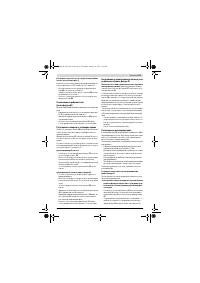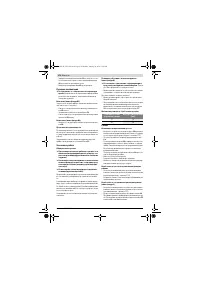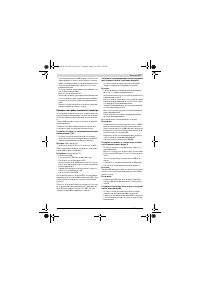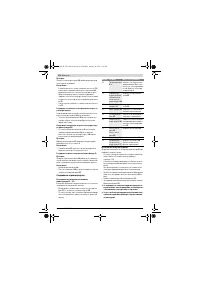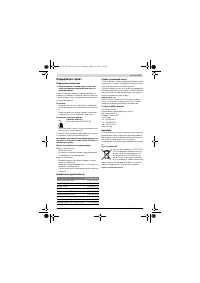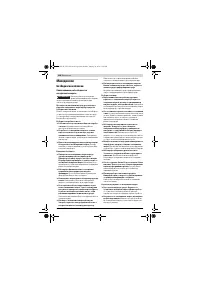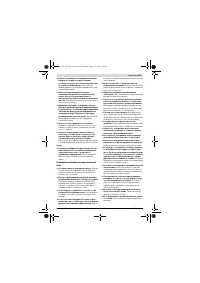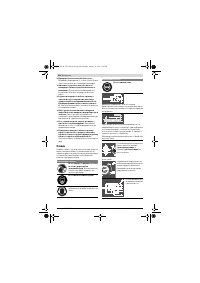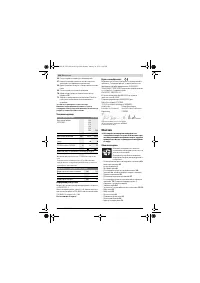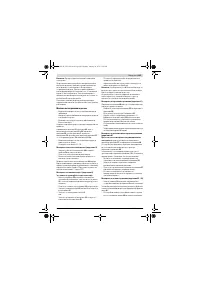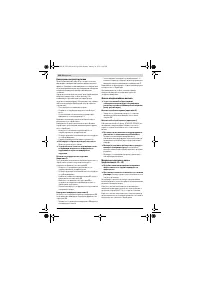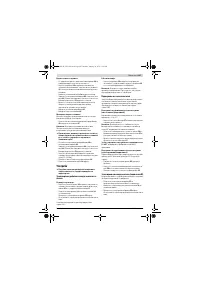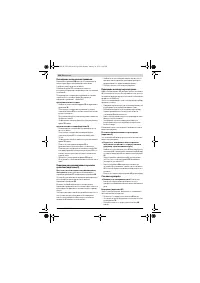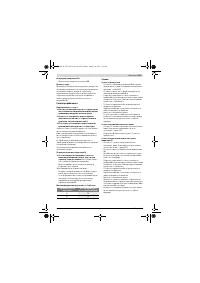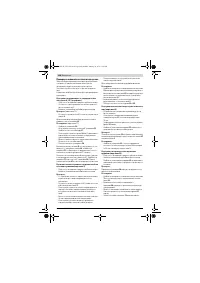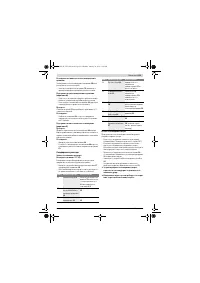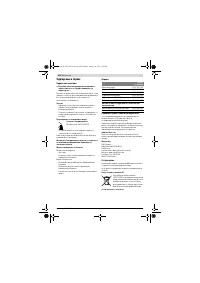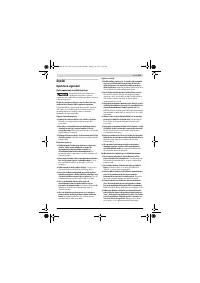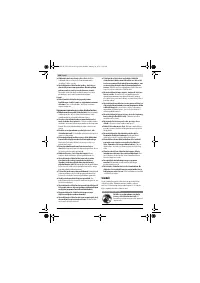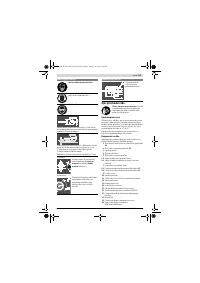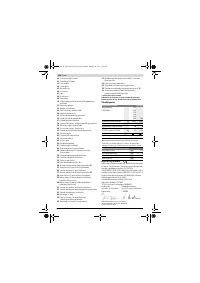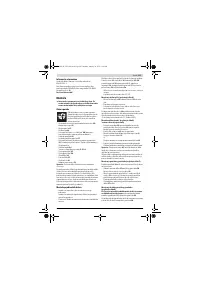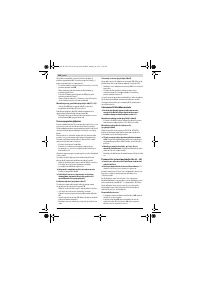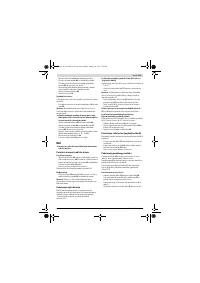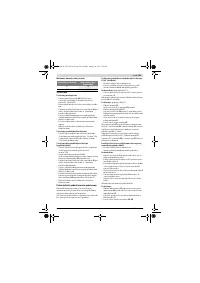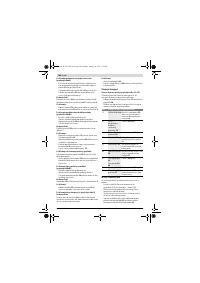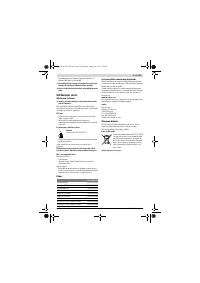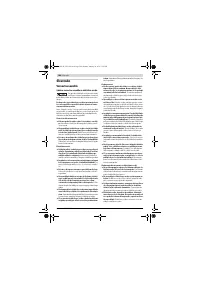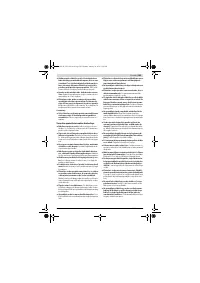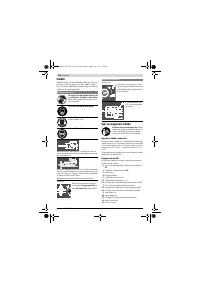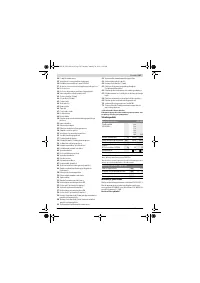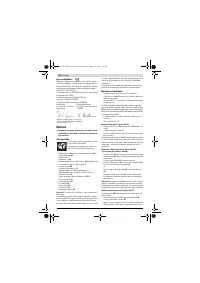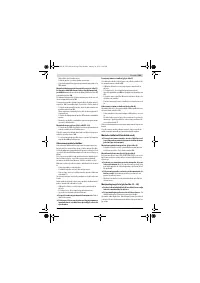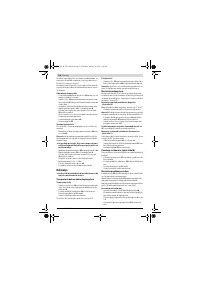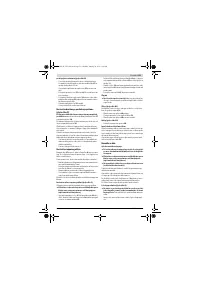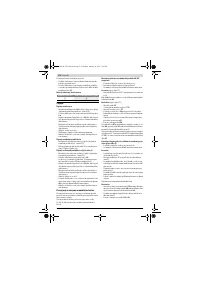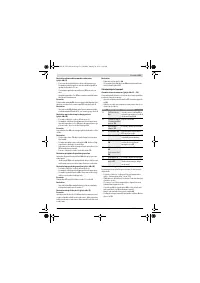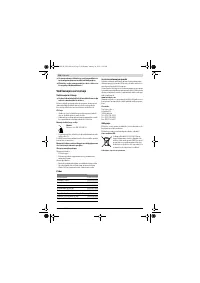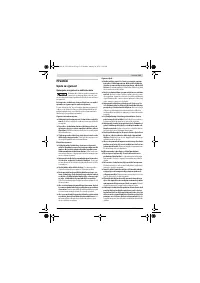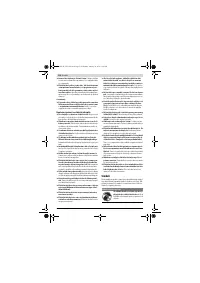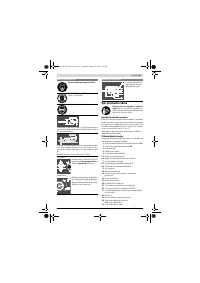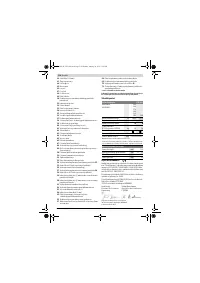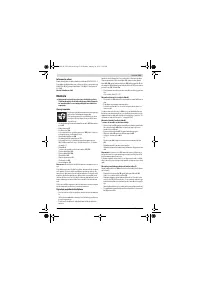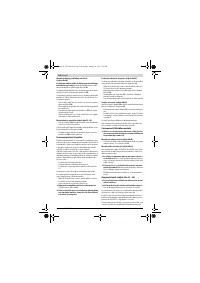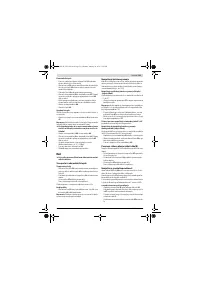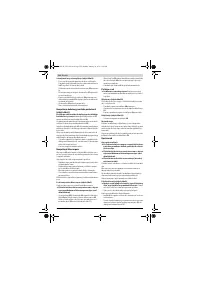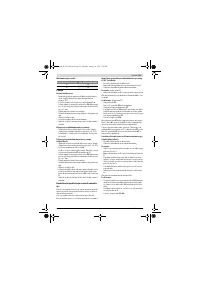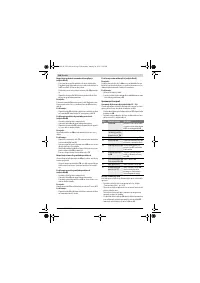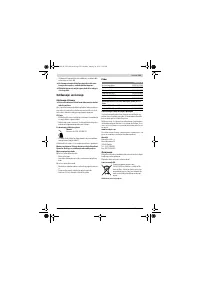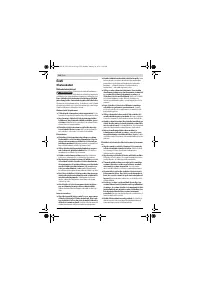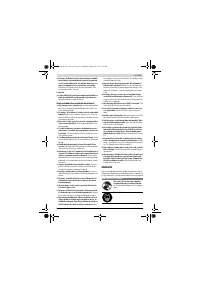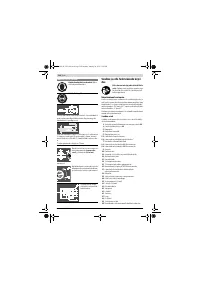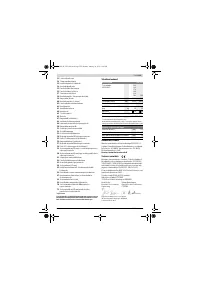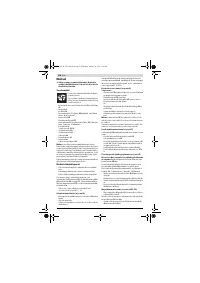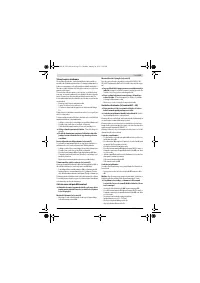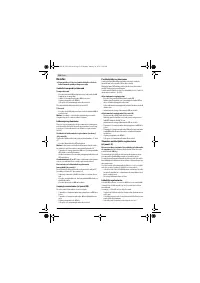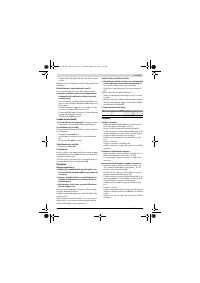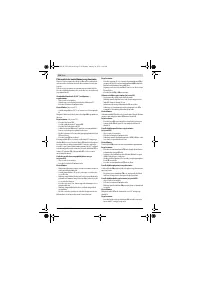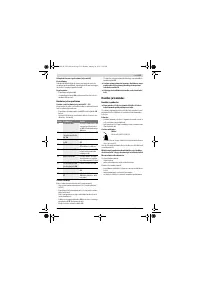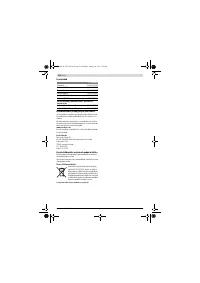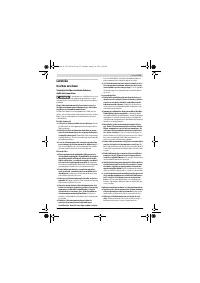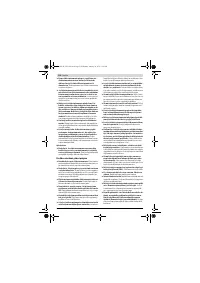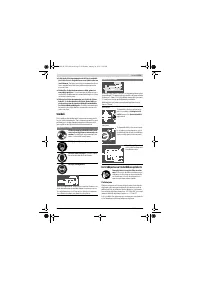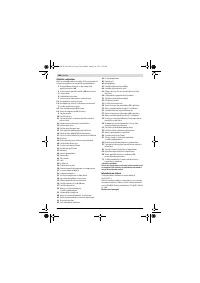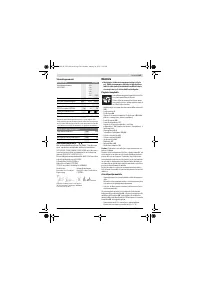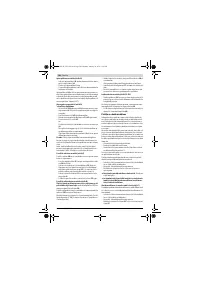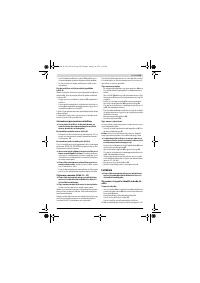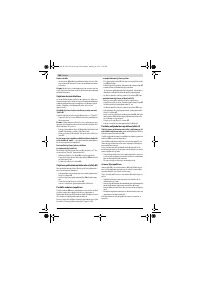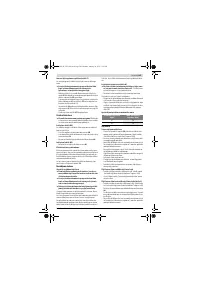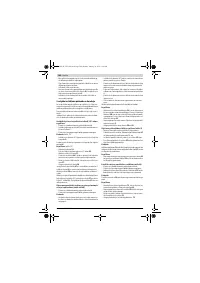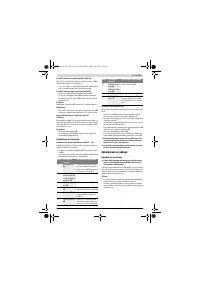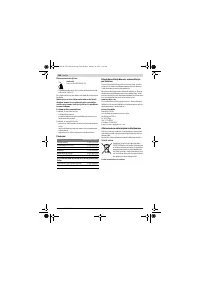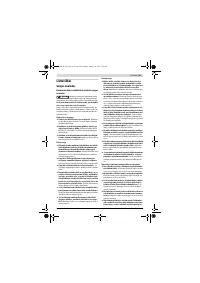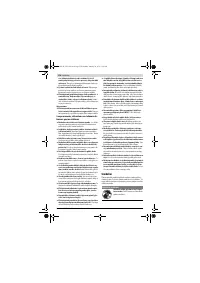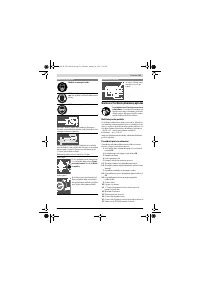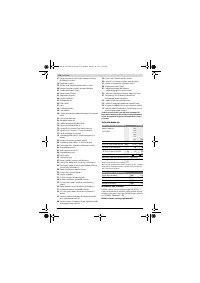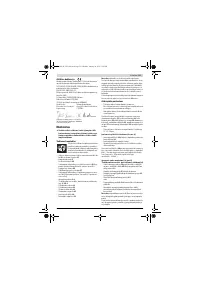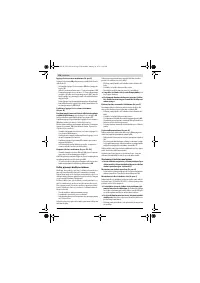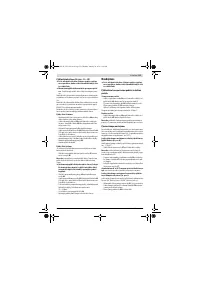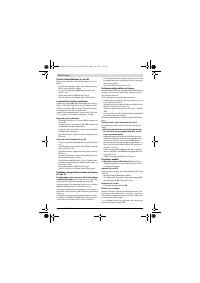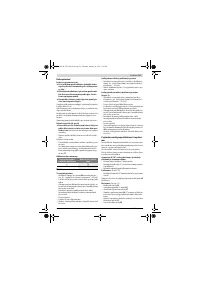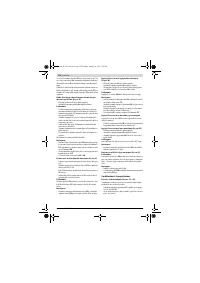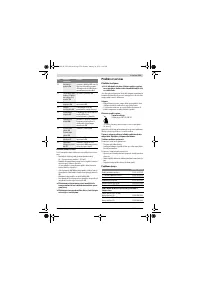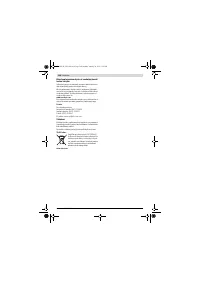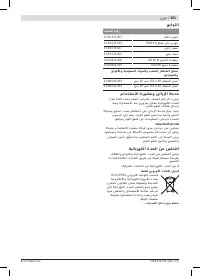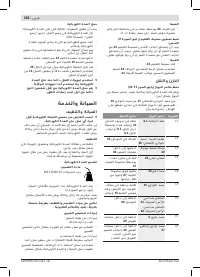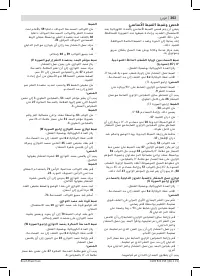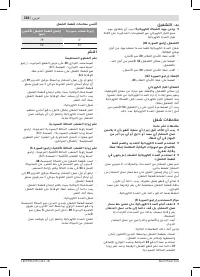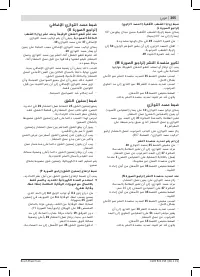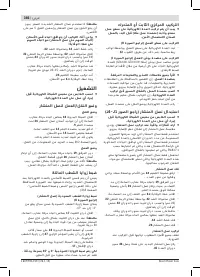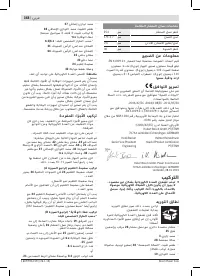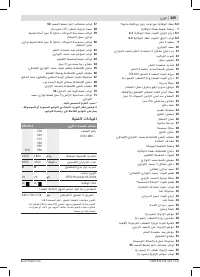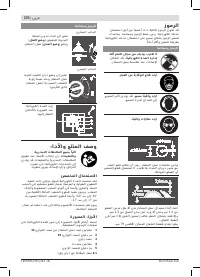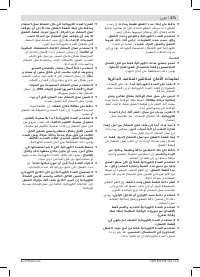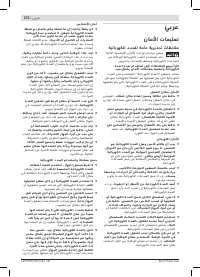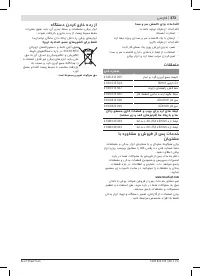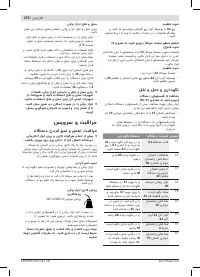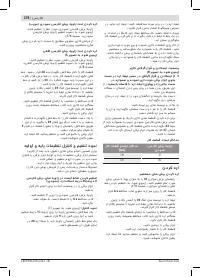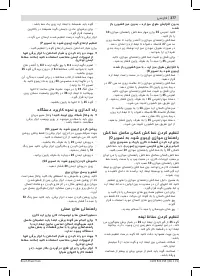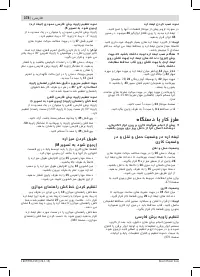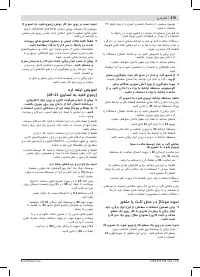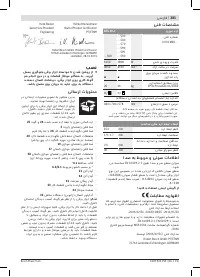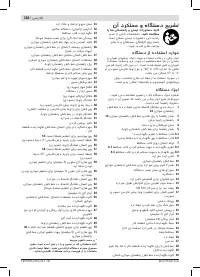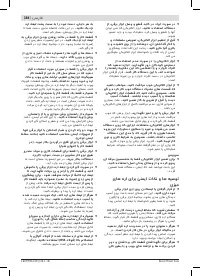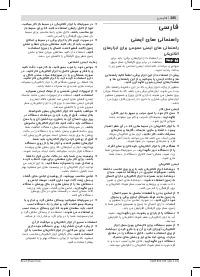Пилы дисковые Bosch GTS 10 J - инструкция пользователя по применению, эксплуатации и установке на русском языке. Мы надеемся, она поможет вам решить возникшие у вас вопросы при эксплуатации техники.
Если остались вопросы, задайте их в комментариях после инструкции.
"Загружаем инструкцию", означает, что нужно подождать пока файл загрузится и можно будет его читать онлайн. Некоторые инструкции очень большие и время их появления зависит от вашей скорости интернета.
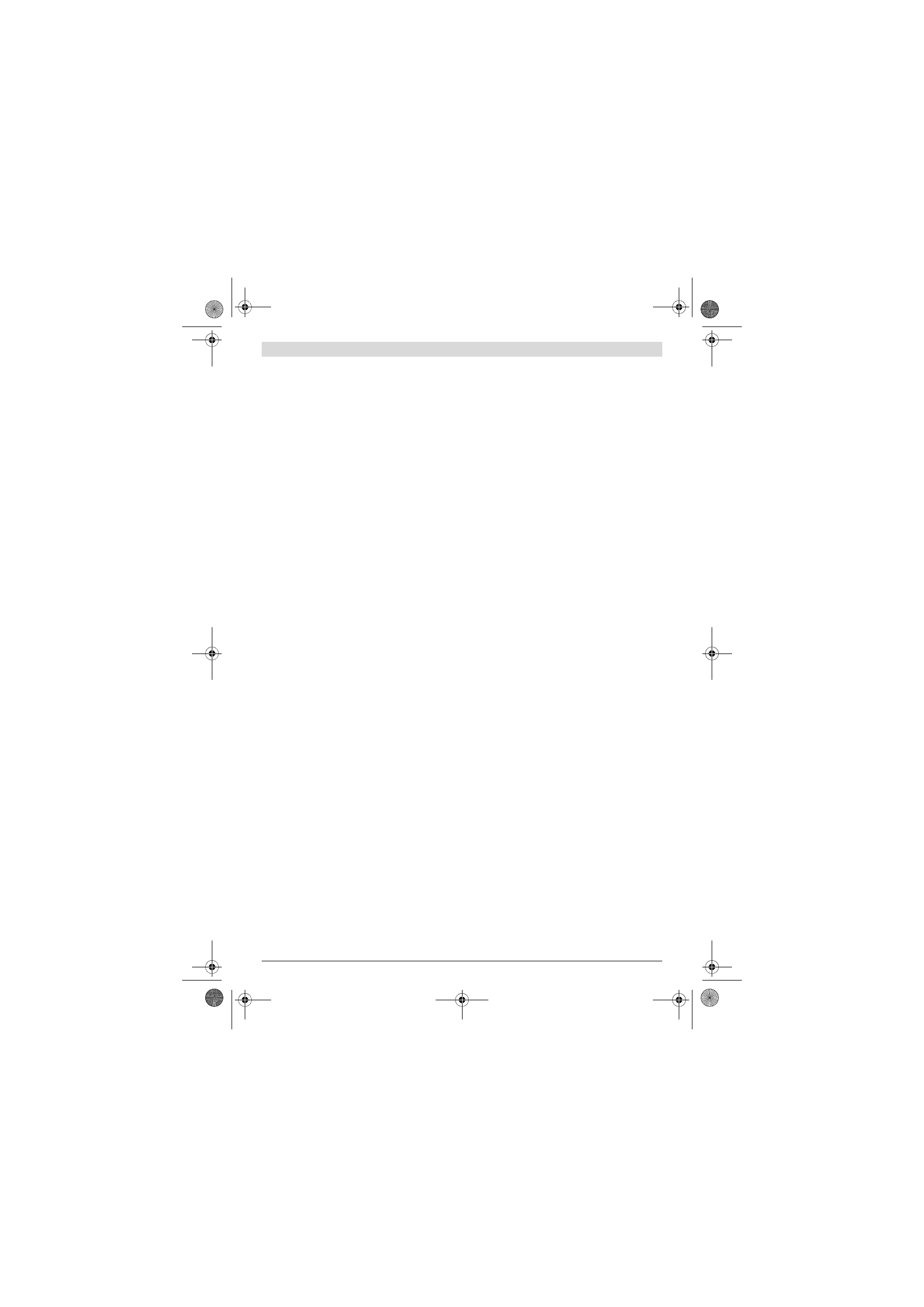
32
| English
1 609 92A 15R | (26.1.15)
Bosch Power Tools
Mounting the Angle Stop (see figures E1 – E2)
– Insert the guide rail
39
of the angle stop
3
into one of the
guide grooves
5
of the saw table intended for this purpose.
For improved placement of long workpieces, the angle stop
can be extended with profile rail
28
.
– If required, mount the profile rail to the angle stop with fas-
tening kit
40
.
Dust/Chip Extraction
Dusts from materials such as lead-containing coatings, some
wood types, minerals and metal can be harmful to one’s
health. Touching or breathing-in the dusts can cause allergic
reactions and/or lead to respiratory infections of the user or
bystanders.
Certain dusts, such as oak or beech dust, are considered as
carcinogenic, especially in connection with wood-treatment
additives (chromate, wood preservative). Materials contain-
ing asbestos may only be worked by specialists.
– Always use dust extraction.
– Provide for good ventilation of the working place.
– It is recommended to wear a P2 filter-class respirator.
Observe the relevant regulations in your country for the mate-
rials to be worked.
The dust/chip extraction can be blocked by dust, chips or
workpiece fragments.
– Switch the machine off and pull the mains plug from the
socket outlet.
– Wait until the saw blade has come to a complete stop.
– Determine the cause of the blockage and correct it.
Prevent dust accumulation at the workplace.
Dusts can
easily ignite.
To avoid the danger of fire when sawing aluminium,
empty the sawdust ejector and do not work with
dust/chip extraction.
Emptying the Chip Ejector (see figure F)
The sawdust ejector
31
can be emptied for removal of work-
piece fragments and large chips.
– Switch the machine off and pull the mains plug from the
socket outlet.
– Wait until the saw blade has come to a complete stop.
– Loosen fastening screw
41
with hex key
21
.
– Pull out chip ejector
31
and remove workpiece fragments
and chips.
– Mount the chip ejector to the power tool again.
External Dust Extraction (see figure G)
To connect a vacuum cleaner to the sawdust ejector
31
, use
the supplied extraction adapter
32
.
– Firmly attach the extraction adapter
32
and the vacuum
hose.
– Additionally, a dust extraction system can be connected
with the Y-adapter (accessory) to vacuum connection
7
, to
increase the extraction performance.
The vacuum cleaner must be suitable for the material being
worked.
When vacuuming dry dust that is especially detrimental to
health or carcinogenic, use a special vacuum cleaner.
Stationary or Flexible Mounting
To ensure safe handling, the machine must be mounted
on a level and stable surface (e. g., workbench) prior to
using.
Mounting to a Working Surface (see figure H)
– Fasten the power tool with suitable screw fasteners to the
working surface. The mounting holes
12
serve for this pur-
pose.
Mounting to a Bosch Saw Stand (see figure I)
With the height-adjustable legs, Bosch saw stands (e. g.
GTA 60 W, GTA 600) provide firm support for the power tool
on any surface.
Read all safety warnings and instructions included with
the worktable.
Failure to observe safety warnings and in-
structions can lead to electrical shock, fire and/or cause
serious injuries.
Assemble the worktable properly before mounting the
power tool.
Perfect assembly is important in order to pre-
vent the risk of collapsing.
– Mount the power tool in transport position on the saw
stand.
Changing the Saw Blade (see figures J1 – J4)
Before any work on the machine itself, pull the mains
plug.
When mounting the saw blade, wear protective gloves.
Danger of injury when touching the saw blade.
Use only saw blades whose maximum permitted speed is
higher than the no-load speed of the power tool.
Use only saw blades that correspond with the characteristic
data given in these operation instructions and that are tested
and marked in accordance with EN 847-1.
Use only saw blades recommended by the tool manufacturer
and suitable for sawing the materials to be cut.
Removing the Saw Blade
– Using a screwdriver, raise the insert plate
24
at the front
and remove it from the tool basin.
– Turn crank
19
clockwise to the stop, so that the saw blade
26
is in the highest possible position above the saw table.
– Tilt the blade guard
6.x
toward the rear to the stop.
– Turn the clamping nut
42
with the ring spanner
22
(23 mm) and at the same time, pull the spindle lock lever
43
until it engages.
– Keep the spindle lock lever pulled and unscrew the clamp-
ing nut turning in anticlockwise direction.
– Remove the clamping flange
44
.
– Remove the saw blade
26
.
Mounting the Saw Blade
If required, clean all parts to be mounted prior to assembly.
– Place the new saw blade onto the supporting flange
46
of
the tool spindle
45
.
Note:
Do not use saw blades that are too small. The clearance
between saw blade and riving knife must not exceed 5 mm
(max.).
OBJ_BUCH-1325-003.book Page 32 Monday, January 26, 2015 1:18 PM
Содержание
- 218 или подвижных частей электроинструмента.
- 219 Всегда распиливайте только одну деталь.; Символы; Символы и их значение
- 220 Описание продукта и услуг; Применение по назначению; Используйте защитные очки.
- 221 Технические данные; Настольная дисковая пила; Размеры пильных дисков
- 222 Данные о шуме; Применяйте средства защиты органов слуха!; Сборка; Комплект поставки
- 223 Отсос пыли и стружки; Избегайте скопления пыли на рабочем месте.; Стационарный или временный монтаж
- 224 Демонтаж пильного диска; Работа с инструментом; Транспортное положение; Настройка угла распила
- 225 Установка параллельного упора; при не вытянутом столе; Регулировка распорного клина; Примите во внимание напряжение в сети!
- 226 Отказ электропитания; Указания по применению; Общие указания для пиления; Пиление; Выполнение прямых пропилов; Основные настройки – контроль и коррекция; Вертикальный угол
- 227 Настройка усилия зажатия параллельного упора
- 228 Хранение и транспортировка; Перенос электроинструмента; Техобслуживание и сервис; Техобслуживание и очистка; Очистка
- 229 Меры по уменьшению уровня шума; Принадлежности; Россия; Утилизация; Товарный No
Характеристики
Остались вопросы?Не нашли свой ответ в руководстве или возникли другие проблемы? Задайте свой вопрос в форме ниже с подробным описанием вашей ситуации, чтобы другие люди и специалисты смогли дать на него ответ. Если вы знаете как решить проблему другого человека, пожалуйста, подскажите ему :)


























































































































































































































